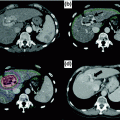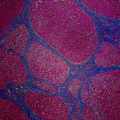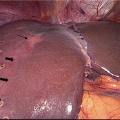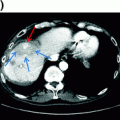Time
Patient 1
Patient 2
Patient 3
Patient 4
Patient 5
Patient 6
7:30–11:30
CT: 07:30 Check-In 08:00 Scan
CT: 07:50 Check-In 08:20 Scan
Lab: 07:30
Lab: 08:00
Lab: 08:15
Lab: 08:30
H&P: 08:30
H&P: 09:00
CT: 08:10 Check-In 08:40 Scan
CT: 08:30 Check-In 09:00 Scan
CT: 08:50 Check-In 09:20 Scan
CT: 09:10 Check-In 09:40 Scan
Lab: 10:00
Lab: 10:00
H&P: 09:00
H&P: 10:00
H&P: 103:0
H&P: 10:30
11:30–12:00
Consultation with support services
12:00–13:00
Patient lunch/multidisciplinary conference
13:00–16:00
Consultation with specialists
Weekly Handout: The coordinator should develop a handout that lists each patient to be discussed and seen that day. A detailed description of the patient’s clinical course to date should be included, such as pertinent past medical and surgical history, radiology, laboratory, endoscopy, and pathology reports. This handout is helpful for the multidisciplinary providers to refer to when a patient is being presented in conference. Emailing the handout the day before the conference may also be especially helpful to the pathologists and radiologists scheduled to host the multidisciplinary conference so that they may prepare ahead of time.
Marketing: As mentioned earlier, an aggressive marketing campaign can help attract patients to the healthcare facility promoting the multidisciplinary clinic. A strong Webpage presence is important, as more patients today are utilizing the Internet to determine where to undergo treatment of their disease. The Webpage should clearly list the multidisciplinary coordinator and a contact phone number as this makes it much simpler for patients to navigate the healthcare system. If the healthcare facility specializes in the treatment of that disease with specialty services, such as robotic or laparoscopic approaches, and endoscopy procedures such as endoscopic mucosal resections (EMR), interventional radiology procedures, or localized radiation therapy, this should be advertised as well. Emphasizing that the patients are evaluated by multiple providers over a one- or two-day visit is essential on all marketing tools for the multidisciplinary program.
Community Outreach: Physicians promoting the multidisciplinary programs should be encouraged to take part in presentations or outreach discussions with prospective referring physicians and practice groups. Participation in local or national support group events helps promote recognition of the multidisciplinary program within the community and/or region.
Data Collection: The initiation of a program is an excellent opportunity to collect data for future research, such as volume growth, clinic visits, surgeries, and procedures. Metrics frequently noted to increase with implementation of a multidisciplinary program are change in diagnosis and change in treatment recommendations from outside institutions; therefore, this information should be documented as well.
19.4 Review of Literature
Presently, there is limited available literature regarding the multidisciplinary approach for liver tumors. One such report by Park et al. for unresectable hepatocellular carcinoma (HCC) describes a lack of scientific evidence for multidisciplinary management. Ward and colleagues, however, reported the importance of a multidisciplinary approach in treating patients with liver lesions, most often HCC, cholangiocarcinoma, or colorectal cancer metastasis as they found this to be the best method in both the preoperative and postoperative setting. Similarly, Venkatesh et al. concluded that patients with liver masses require multidisciplinary collaboration for efficient characterization and management. Jacobson reports that evidence comparing cancer care delivered in a multidisciplinary versus traditional settings is scant; however, unsupported benefits include having the ability to make a more accurate evaluation of patient information, greater standardization, and adherence to evidence-based care and improved cancer outcomes. Yopp et al. also support the multidisciplinary approach for HCC patients. They found that patients evaluated in their HCC multidisciplinary clinic had a median survival of 13.2 months compared to 4.8 months noted in patients prior to MDC establishment [7, 10–13].
When looking at other disease types, there are some publications noting the impact multidisciplinary programs have had on change in initial diagnosis, as review from a multidisciplinary team can find discrepancies during radiology, endoscopy, and/or pathology review of disease type and/or cancer staging. Also noted in the literature is finding a change in outside treatment recommendations, which can include decision for surgical resectability, radiation therapy, interventional radiology procedures, chemotherapy options, and eligibility into clinical trials [14, 15].
At the University of Colorado Hospital, we found that 27% of patients evaluated in a multidisciplinary program for gastrointestinal (GI) cancers had a change in diagnosis. This includes a radiographic or endoscopic change resulting in a stage change, a radiographic change resulting in a change in clinical diagnosis, and/or a change in pathology diagnosis. This group also reported a 28% change in treatment recommendation from outside providers in patients participating in their GI multidisciplinary clinics [16]. van Hagen et al. report a 34.5% change in treatment recommendation for patients with GI malignancies participating in their multidisciplinary program. Schmidt et al. describe a 26% change in treatment recommendation for esophageal cancer patients and a 40% change in treatment recommendation for lung cancer patients reviewed in their multidisciplinary clinic. Pawlik et al. found a 24% change in recommended management based on evaluation from the multidisciplinary team on patients with pancreatic cancer [17–19].
In other studies looking at the benefit of multidisciplinary care of patients, Bumm et al. found that treatment recommendations from the multidisciplinary team for patients with esophageal cancer were put into practice more than 95% of the time. Gardner et al. observed improved patient access to consultations and shorter time to initial treatment with the establishment of a multidisciplinary program for patients with pancreatic adenocarcinoma undergoing neoadjuvant therapy. Litton et al. noted that 98% of patients participating in their breast multidisciplinary clinic rated their overall experience as “excellent” and that physicians also credited improved communications and increased efficiency in this approach. Wilson et al. stated that implementation of a multidisciplinary team increased the number of patients reviewed and the proportion reviewed within 2 weeks of diagnosis [20–23].
19.5 Case Report
As described above, there are many benefits of a multidisciplinary approach for patients who require multimodality therapy. At the University of Colorado Hospital, the Liver and Neuroendocrine Tumor (NET) Multidisciplinary Clinic (Liver MDC) sees complex patients with diagnoses such as HCC, metastatic tumors to the liver, liver metastasis with unknown primary cancer, neuroendocrine carcinomas, and cholangiocarcinomas. The majority of these patients come through the multidisciplinary clinic more than once for restaging evaluation after each treatment. Here is an example of a patient seen through Liver MDC:
Patient presentation
61 y/o female with a history of hypothyroidism and BRCA2 carrier, who presented to her local ER with acute onset right sided abdominal pain and increasing fatigue. Past surgical history negative, former 10 pack year smoking history. Physical examination was unremarkable. Laboratory results noted an elevated Alk Phos at 145 U/L.
Patient workup
August 16, 2015 Abdominal Ultrasound: heterogeneous echotexture of the right hepatic lobe, raising the possibility of large hepatic mass.
Stay updated, free articles. Join our Telegram channel

Full access? Get Clinical Tree








